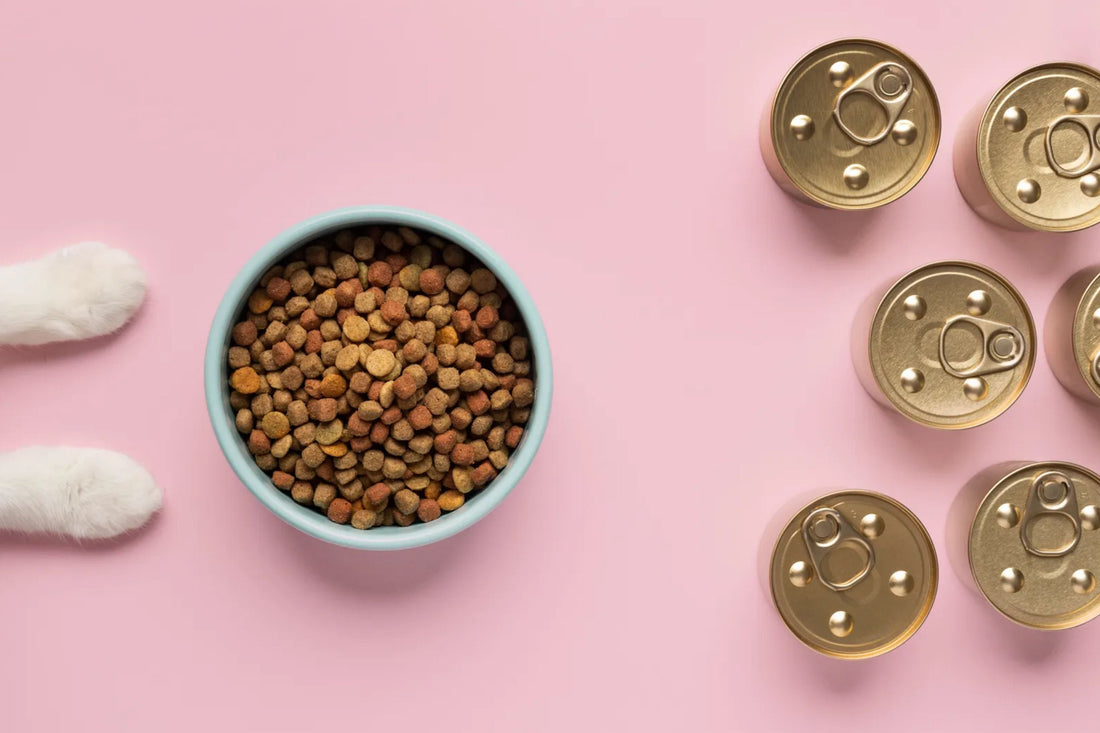
How to Choose the Right Food for Puppies and Kittens
Share
Bringing home a new puppy or kitten? Congratulations! 🎉 These little bundles of energy need more than just cuddles — they need the right nutrition to grow up healthy, strong, and happy. But with so many pet food options on the market, choosing the best one can feel overwhelming.
In this guide, we’ll help you understand what to look for when selecting food for your puppy or kitten, so you can support their development from day one. 🐾💚
🧠 Why Puppy and Kitten Nutrition Matters
During their first year, puppies and kittens experience rapid growth — in bones, muscles, brain, and immune system. They require nutrient-dense food that supports:
- Strong bones & joints 🦴
- Healthy brain development 🧠
- Immune system support 🛡️
- Shiny coat & skin health ✨
- Proper digestion 🐾
🐶 What to Look for in Puppy Food
✅ High Protein Content
Puppies need extra protein for muscle growth and energy. Look for food with real meat as the first ingredient (like chicken, lamb, or fish).
✅ DHA for Brain Development
DHA (an omega-3 fatty acid) supports cognitive development and vision. It’s often found in fish oil or egg.
✅ Small Kibble Size
Choose small, easy-to-chew kibble to prevent choking and make eating more enjoyable.
✅ “Complete & Balanced” Label
Ensure the food meets AAFCO standards (Association of American Feed Control Officials) for growth and development.
🐱 What to Look for in Kitten Food
✅ High-Quality Animal Protein
Kittens are obligate carnivores, which means they need animal protein to thrive. Look for ingredients like chicken, turkey, or fish.
✅ Taurine for Heart and Eye Health
This essential amino acid is crucial for kittens and must be included in their diet.
✅ Extra Calories and Fat
Kittens are constantly playing and growing. Their food should be rich in calories and healthy fats for energy.
✅ Wet & Dry Food Combo
Kittens benefit from a mix of both to ensure hydration and dental development.
🚫 What to Avoid in Pet Food
- Artificial colors, flavors, and preservatives
- Meat by-products or vague ingredients ("meat meal")
- Grain fillers (for sensitive pets)
- Adult pet food – not suitable for growing bodies
📋 Reading the Label: What It Should Say
Look for:
- “Formulated for Growth” or “For All Life Stages”
- Specific meat listed as the first ingredient
- No corn, soy, or wheat (optional, depending on your pet's sensitivity)
- Omega fatty acids (DHA/EPA) for skin & brain
🕒 Feeding Schedule Tips
- Puppies (under 6 months): 3–4 meals per day
- Kittens (under 6 months): 4 small meals per day
- Always have fresh water available 💧
- Transition slowly between different foods to avoid tummy troubles
💡 Final Thoughts
Choosing the right food for your puppy or kitten is one of the most important decisions you can make as a pet parent. 🐶🐱 A strong foundation of quality nutrition sets them up for a lifetime of health, happiness, and tail wags (or purrs!).
If in doubt, always consult your veterinarian — and remember, what’s “premium” isn’t always what’s best. It’s about what’s nutritionally complete, safe, and appropriate for your growing pet.
![Pawtner [ Good Love Pawtner ]](http://goodlovepawtner.com/cdn/shop/files/logo-04.jpg?v=1747071199&width=600)
